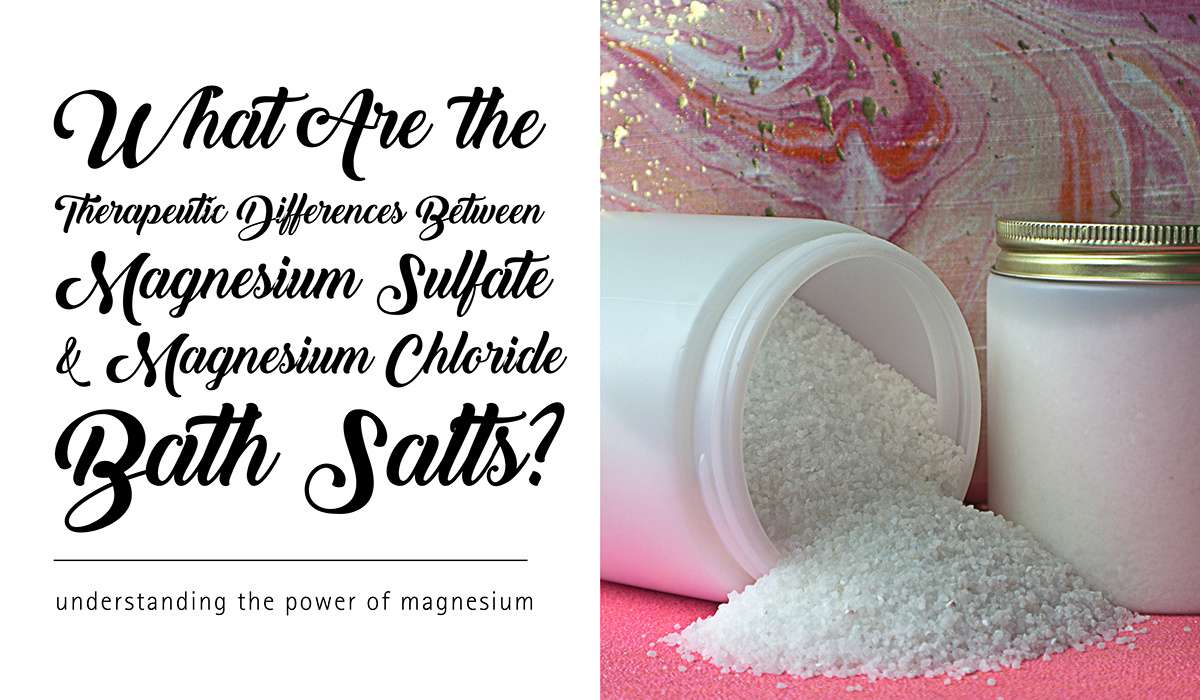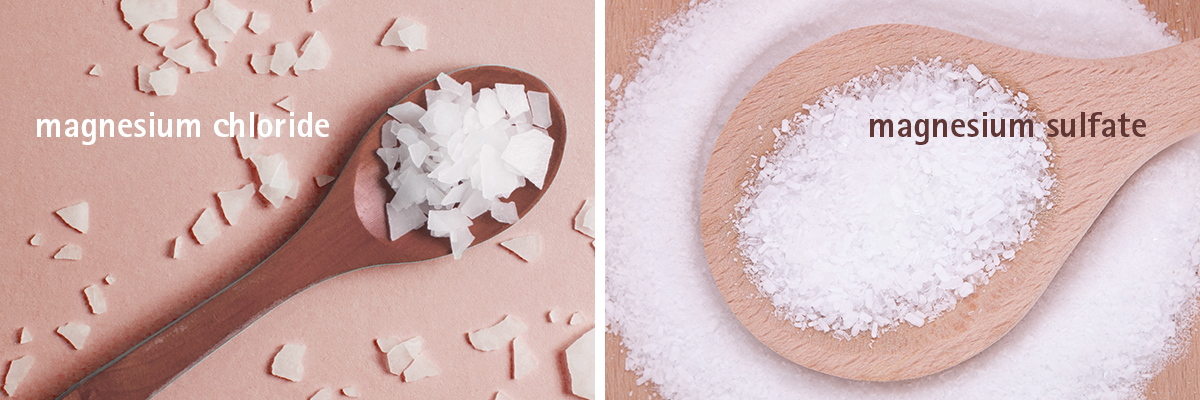What Are the Therapeutic Differences Between Magnesium Sulfate and Magnesium Chloride Bath Salts?

When considering the ingredients that go into your homemade packaged bath salts, it’s important to understand how different ingredients can benefit bath salt users.
Two popular ingredients in different types of bath salts include magnesium sulfate, more commonly known as Epsom salts, and magnesium chloride. While both substances are made up of magnesium, the products don’t offer the same benefits.
Understanding the Power of Magnesium
Magnesium is a naturally-occurring mineral that the body needs to perform hundreds of enzymatic reactions. These reactions include the processing of proteins and fatty acids, metabolism, and the transmission of impulses within the nervous system. However, the human body doesn’t produce magnesium on its own.
Much of the human body’s magnesium supply is found in the skeletal system, with the rest distributed between the soft tissues, muscles, and body fluids. Magnesium also offers a number of health benefits, including reducing the risk for diabetes, enhancing calcium absorption, and ensuring heart health. It may also help relieve and prevent pain from migraine headaches, anxiety and premenstrual syndrome.
Medical research suggests that many people have a magnesium deficiency and should be supplementing the mineral through their diet, eating more foods high in magnesium, including sunflower seeds, shrimp, and almonds. Magnesium can also be absorbed in the body through the skin during a bath or by using topical supplements.
Symptoms of a Magnesium Deficiency
Magnesium deficiencies can arise when people aren’t consuming magnesium-rich foods in their daily diet. Some medical conditions, including gastrointestinal disorders, can also lead to a lack of magnesium. Magnesium deficiencies may also result from the use of certain prescription and over-the-counter medications.
Common symptoms of a magnesium deficiency include:
- Muscle twitches
- Chronic fatigue
- Muscle weakness
- Irregular heartbeat
As you age, you may also be at an increased risk for developing osteoporosis, a degenerative bone condition.

Magnesium Chloride Versus Epsom Salts
Magnesium chloride offers a variety of benefits you may not get from Epsom salts. In general, magnesium chloride is more easily absorbed by the body and is less toxic to human tissue. It also lasts longer in the body, offering users more intense relief from muscle soreness, joint pain, and skin conditions.
With Epsom salts, the body doesn’t absorb the minerals as effectively and the kidneys excrete the magnesium chloride faster than they do magnesium sulfates.
As it doesn’t stay in the body as long as other minerals, users may not get the desired relief using magnesium sulfate-based bath salts.
Digestive Benefits of Epsom Salts
Magnesium sulfate is commonly called Epsom salts because its appearance closely resembles table salt and the compound was first discovered in Epsom, a town in Surrey, England. While named after a salt, magnesium chloride is very different than table salt, offering a very bitter taste.
However, there are products that contain magnesium chloride which can be safely ingested to treat a number of health conditions, including insomnia, constipation, and even fibromyalgia pain. Some people also rely on ingestible magnesium chloride as a pain reliever for muscle cramps and soreness caused by exercise.
Magnesium chloride is popular for topical application but isn’t typically used for food-grade products. In fact, because the body can absorb magnesium chloride so well, the mineral is often most effective when absorbed through the skin during a bath or when using magnesium chloride-containing creams and lotions.
Focused on the Customer
If your goal is to help customers relax and rejuvenate their mind and body by using your bath salts, you may want to consider the benefits of adding magnesium chloride.
Tweaking your recipes to include magnesium chloride can boost your product’s overall health benefits and effectiveness. Be sure to promote the benefits of this healing mineral directly on your bath salt packaging to grab consumer attention.
If you need help selecting packaging options for your handmade bath salts, speak with a BottleStore.com container expert to learn more about available plastic and glass bath salt jars, bottles, and vials.
More Resources
The Difference Between Magnesium Chloride and Magnesium Sulfate
The Difference Between Epsom Salt And Magnesium Salt
Benefits And Uses Of Epsom Salt
Are Your Medications Causing Nutrient Deficiency?
Symptoms Of Magnesium Deficiency

Thank you for sharing this. im using Himalayan salt lamp for good aura and lessen my stress on my workplace. Im interested on this magnesium salt i havent tried it but im willing to.